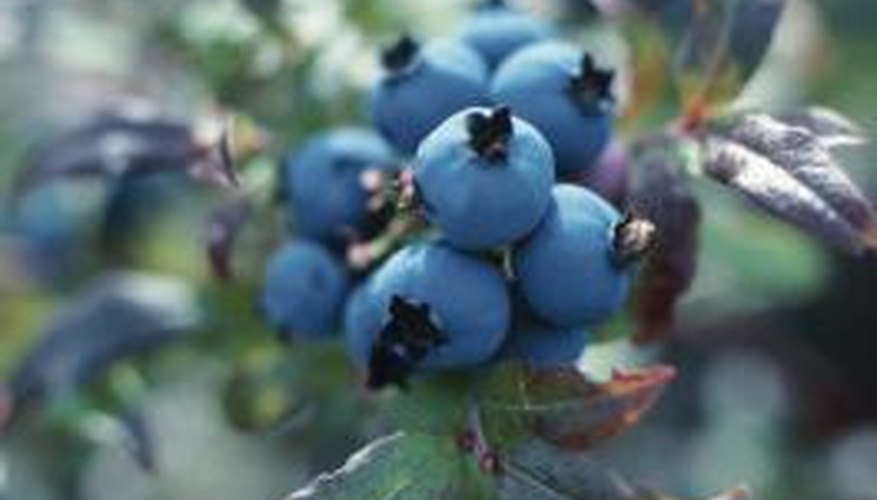Blueberry bushes are grown for their fruit. Keeping blueberry bushes healthy is key to fruit production. Blueberry bushes are susceptible to caterpillar infestations that feed on the leaves and damage the plant. Early detection and identification are important to managing these damaging pests.
Types
The yellownecked caterpillar is found in many areas of the United States. It commonly feeds on blueberry, cherry, apple, birch, oak, witch-hazel and basswood. The yellownecked caterpillar is a voracious feeder causing extensive damage to blueberry bushes. Another leaf-feeding pest of blueberry bushes is the azalea caterpillar. This pest prefers feeding on azaleas, but has recently been discovered feeding on blueberry bushes. Azalea caterpillars often defoliate large portions of blueberry bushes before discovery.
- The yellownecked caterpillar is found in many areas of the United States.
- The yellownecked caterpillar is a voracious feeder causing extensive damage to blueberry bushes.
Identification
The yellownecked caterpillar has a black head capsule, orange or yellow rings around its neck and yellow lines along its sides. Long white hairs cover caterpillar that measures approximately 2 inches in length. Light-brown moths are its adult form. The azalea caterpillar is yellow with lines along is sides and a black head capsule. As this caterpillar ages, its colours brighten. Azalea caterpillars measure 2 inches in length at maturity, and its adult form is a light-brown moth.
- The yellownecked caterpillar has a black head capsule, orange or yellow rings around its neck and yellow lines along its sides.
Effects
The yellownecked caterpillar young larvae skeletonise blueberry leaves, feeding together on leaves. Older yellownecked caterpillar larvae can completely defoliate a blueberry bush. Blueberry bushes with heavy infestations are stunted from feeding injury, but rarely die. The azalea caterpillar feeds on blueberry foliage, causing it to become skeletonised, dry and brittle. Young larvae skeletonise leaves, while the older larvae completely consume blueberry leaves.
- The yellownecked caterpillar young larvae skeletonise blueberry leaves, feeding together on leaves.
Control
Both the yellownecked caterpillar and the azalea caterpillar have several natural enemies that feed on them. Tachinid flies and parasitic wasps are two predatory insects that feed on caterpillars. If light infestations of caterpillars are found on blueberry bushes, remove them by hand and drop them into a bucket of soapy water. Heavy infestations are controlled with insecticidal sprays purchased at your local garden centre.
- Both the yellownecked caterpillar and the azalea caterpillar have several natural enemies that feed on them.
- If light infestations of caterpillars are found on blueberry bushes, remove them by hand and drop them into a bucket of soapy water.
